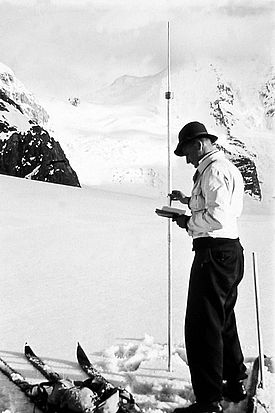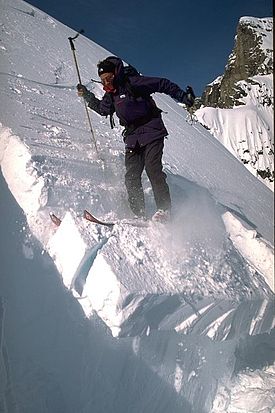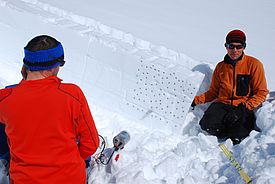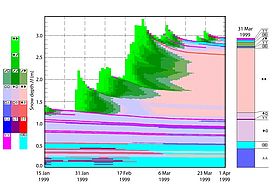It was not long after the Swiss Commission for Avalanche Research was founded in 1931 that its members recognised the need to conduct research into the properties of snow and the snowpack in order to understand how avalanches arise. In consequence, the body itself was promptly renamed the Commission for Snow and Avalanche Research. Snowpack investigations remain an essential element of avalanche warning and research activities to this day.
First systematic measurements taken in 1936
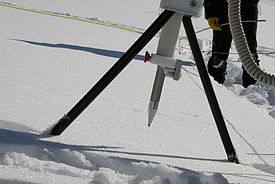
Systematic measurements were first taken in 1936, on the Weissfluhjoch test site at an altitude of 2540 m. Apart from recording the amount of fresh snow and meteorological parameters, the pioneers determined the layering of the snowpack by regularly generating snow profiles. They also investigated the heat balance and settling of the snowpack, as well as the fracturing of slab avalanches (Fig. 1), for which purpose the Parsenn resort was especially well suited. In most cases, the researchers developed the investigative methods themselves; they frequently adapted techniques with which they were already familiar from their scientific training in mineralogy, geology, engineering or geotechnics. They developed the ram penetrometer (Fig. 2), for example, in order to measure the hardness of the snow layers. The measurement is performed by driving a tube with a conical tip into the snowpack. Its aim was, and still is, quickly to determine the layering of the snowpack and draw conclusions about its stability – without any digging.
Detailed insight into the snowpack
The ram penetrometer has been unable entirely to achieve this ambitious goal. In the late 1990s SLF researchers developed an electronic successor called the snow micropenetrometer (Fig. 3). Its high-resolution force sensor, which is attached to an automatically driven probe, measures the penetration resistance of the various snow layers. Measurements with the SnowMicroPen are taken quickly, are objective, and capture even very thin and therefore potentially weak layers of the snowpack. For the first time, the SMP enabled researchers to record a large number of measurements within just a few hours, and thus to research the areal variability of the snowpack in particular. Among other factors, the signal (penetration resistance vs. depth) allows the type of snow to be identified as well. Like its predecessor, despite achieving significant progress towards indicating snowpack stability at the push of a button, the SMP has been unable to make the final breakthrough. Digging remains necessary. In most cases, modern methods are still combined with classic observations, notably including snowpack tests.
New technology – radar
Against this backdrop, the quest to characterise the snowpack quickly and objectively has lost none of its immediacy, even today. In the best-case scenario, moreover, measurements should be non-destructive and thus allow changes in the snowpack over time to be captured. The SLF is currently investigating whether a radar system, buried in the ground before the onset of winter, could provide a solution. The radar measures the layering of the snow from underneath and, among other things, records the penetration of melt water into the snowpack.
Rutschblock test as the mother of stability tests
In the 1980s more direct methods of examining snowpack stability in the field were developed. Initially serving only to demonstrate a miniature snow slab, the rutschblock test emerged as the standard technique. First, the four vertical faces of a block of snow measuring 2 m x 1.5 m are isolated from the snowpack. A person then applies gradually increasing loads to the block until it fractures (Fig. 4). The snow researchers soon recognised that the load at which the block fractures is not the only key factor; at least as important are how the fracture occurs and which part of the block slides away. We now know that this outcome depends on the fracture propagation, which plays a critical role in avalanche formation. Tests have now been designed specifically to investigate fracture propagation (Fig. 5).
Computer models
Field measurements – to supplement model calculations and laboratory experiments – will remain a key element of research and avalanche warning activities in the future as well. Given that manual snow profiles and stability tests are only point measurements, they seldom present a comprehensive picture of the situation across the whole of the Alps. For this reason, simulating the snowpack would appear to constitute a sensible approach. A program with a proven track record in this context is the snowpack model SNOWPACK, which was developed at the SLF. The snowpack is modelled hourly in more than 100 locations by automatic weather stations belonging to the IMIS measuring network (Fig. 6). Rather like the SMP, the model has yet to overcome the sticking point of determining snowpack stability, which remains a challenge for future research.

